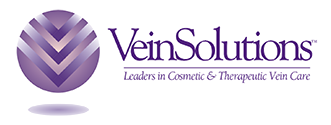Did you know that over 35% of Americans suffer from varicose veins, or some type…
Can men get varicose veins? (The answer may surprise you!)
In June, we celebrate all the special men in our lives for Father’s Day. This month, VeinSolutions also recognizes Men’s Health Month by spreading awareness about the serious health conditions that may strike the men you care about.
One of those conditions is varicose veins.
It’s a myth that varicose veins only affect women. Surprisingly, men make up the more than 35% of people in the United States who suffer from them. We see varicose veins in male patients frequently at our vein treatment centers in Austin and Georgetown.
What are varicose veins?
Varicose veins, also known as varicosities, are thick, knotted structures under the skin, frequently occurring in the legs. They form when blood pools in the veins due to improper vein function and poor blood flow resulting in the thick, rope-like appearance.
Varicose veins symptoms include swelling, aches and pains, sometimes burning and itching, and unsightly blue or purple discoloration.
What causes varicose veins in men?
Some factors that may contribute to men developing varicose veins are obesity (as extra weight puts enormous pressure on veins), advanced age, genetics (possibly a family member who also suffered from varicose veins), prolonged sitting or standing, and physical inactivity.
Here’s what our team of board-certified vascular surgeons and vein specialists want you to know about men and varicose veins:
-
They are not just a cosmetic issue and should not be ignored.
As men can sometimes be reluctant to seek medical help, we want them to know they should check in with a vein specialist if they have varicose vein symptoms. If left untreated, varicose veins can contribute to poor circulation and blood flow throughout the body as well as severe pain in the legs.
-
Moving more can help alleviate some varicose vein symptoms.
Work on moving as much as you can and working out more. Start with slow walks or low intensity routines and build up to longer, more challenging sets. Biking, swimming, and elliptical training are all great options for improving blood flow and circulation in the legs.
-
Watching your diet is important too.
Making basic healthy choices can help with varicose veins such as eating more fiber, staying hydrated, and limiting salt intake which can increase swelling.
-
There are a variety of highly effective treatments for varicose veins.
If nothing else works, don’t be afraid to seek medical treatment to eliminate your varicose veins. Something as simple as wearing compression stockings could work to ease symptoms, or we offer easy, in-office procedures like endovenous ablation and minimally invasive vein surgery to permanently remove varicose veins with little pain or downtime.
Please visit us here to schedule an appointment with one of our board-certified specialists at VeinSolutions in Austin, or contact us at 512.452.VEIN (8346). For VeinSolutions in Georgetown, please contact us at 512-501-4287.



